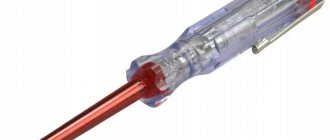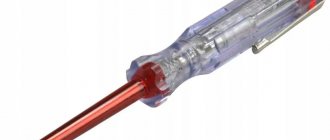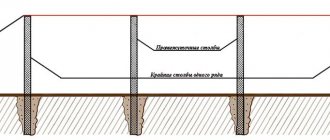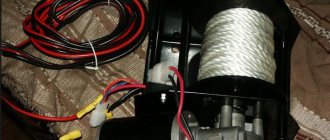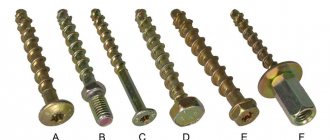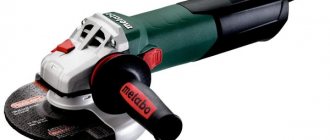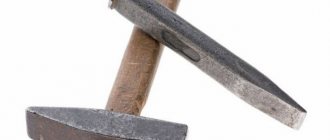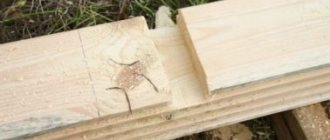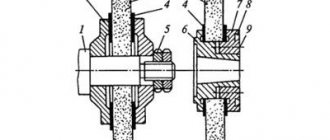Facing work with tiles and porcelain stoneware involves the use of various types of devices, which are presented in a wide range in construction stores today. Among them, tools for cutting factory blanks are mandatory. Let's look at how to cut tiles with a manual tile cutter. Let’s take a look at the experts’ recommendations for selecting and maintaining devices so that they last for a long time.
Cutting tiles with a manual tile cutter Source plitkahelp.com
Manual tile cutter
When working with facing material or laying sidewalk paths, it often becomes necessary to cut individual elements to exact dimensions. A similar problem is solved using a manual tile cutter.
What is the choice based on?
To decide which manual tile cutter is best to choose, it is recommended to imagine how often it is planned to be used, what working volumes will have to be mastered, and what building materials will have to be cut.
If you purchase a tool for repair work performed on your own, you should pay attention to manual modifications. They cost reasonable, cut tiles one and a half centimeters thick, and do not make noise during operation.
In cases where large volumes of finishing work are to be done, and ideal cutting quality is required, especially when facing tiles from different materials, including stone, are used, then it is best to immediately purchase an electric tile cutter with a drive. This type of tool is characterized by greater productivity; it cuts thick tiles within one minute, making an even cut.
Hand tools for professionals and amateurs
Tile cutters are deliberately divided into such groups. The amateur version is not very expensive, but cannot withstand prolonged use. There is no additional functionality, or its quality leaves much to be desired. This tool is used for single repairs.
A professional-level tool will cost you quite a lot, but the price difference will be compensated by high-quality assembly, good components, and accurate design calculations. Cutting is performed with better quality, and the service life of the tool increases.
For convenient use, the kit includes rulers, stop elements, squares and other accessories. This type of tile cutter is popular among finishing workers.
What criteria are used to select a tool for cutting tiles?
Before you start using a manual tile cutter, you should choose it correctly, taking into account all the nuances and distinctive features. There are certain points that you must pay attention to:
- full compliance with the stated requirements. The strength of the cutting part is selected taking into account the material to be cut; the maximum parameters for the depth and length of cutting are determined based on the parameters of the tile used in the repair;
- high-quality assembly. The tile cutter is visually inspected for defects, and the lever is moved to make sure there is no play. When the lever is pressed, the guides must remain level and not bend;
- Possibility of cutting at an angle. The function is useful; with its help, the tile material in the corner areas is adjusted as accurately as possible. The working platform is easy to adjust, the installation does not get lost after fixation, and there is no play;
- availability of spare parts and consumables that periodically need replacement.
In addition, there is a possibility of breakdowns, and it would not be superfluous to clarify in which stores the components for your tile cutter are purchased, where the repair shops are located, if it is not possible to fix the problem on your own.
What are the advantages of using electric tile cutters?
You should purchase a machine for cutting tiles with water if you are processing durable materials at a professional level. The following advantages will help you make a positive decision about purchasing or renting a machine:
- Efficient cutting of materials of different thicknesses. Depending on the model of tile cutters, they allow you to cut parts of different thicknesses, which is very convenient, for example, when you need to get the appropriate size of a product. On machines, depending on the model, the maximum permissible thickness of materials that can be cut with a tile cutter is indicated.
- Lack of dust formation is one of the significant advantages, which is achieved due to the presence of a water cooling system
- High productivity - water during the cutting process lowers the temperature of the disk, eliminating its overheating. The diamond-coated wheel does not heat up and does not melt, so it lasts long enough and efficiently, eliminating engine overload
- You can cut any types of materials from tiles to glass
- Long service life not only of the machine, but also of the cutting disc. You can work on one disk for at least 2-3 years with daily appropriate manipulations
- The ability to obtain not only a straight cut at an angle of 90 degrees to the main surface of the material, but also at different angles, pre-setting the position of the disk
The ability to cut materials of different sizes depends on the dimensions of the table. That is why, before buying a machine, it is necessary to consider what materials you plan to cut - their thickness and dimensions. Electric tile cutters with a water cooling option have a number of disadvantages. These disadvantages must be taken into account immediately before purchasing machines.
This is interesting!
If in devices with an upper motor, cooling is realized through the use of a pump, then on models with a lower motor, heat removal is ensured by using a container of water in which part of the disk is located.
Classification of manual tile cutters
The tile cutter is designed for manual straight cutting (for non-round holes of various diameters - using a circular “ballerina” cutter) of ceramic non-porcelain tiles up to 15 mm thick. Convenient for quick cutting, silent, does not require electricity costs, and its operating principle is similar to a regular glass cutter.
According to their design and operating principle, tile cutters are divided into:
- manual roller tile cutter - this type of manual tile cutter is used for cutting a piece of wall or floor tiles at a right angle, or in other words, at an arbitrary angle. The tile is fixed on the rubberized base of the frame; not under uniform pressure of the lever, the cutting element (roller) makes a cut along the marking along another break.
- manual bearing tile cutter - the movement of the carriage with the cutting disk is carried out along the guide rails by a bearing mechanism. The radial bearings installed in professional models ensure a much longer service life of the tool, high cutting accuracy and the quality of the tile edges.
The choice of the necessary tool directly depends on the expected volume of tiles to be processed. For each specific tile cutter model, the characteristics indicate the maximum size of the processed tile and the range of its possible thickness (from 4 to 20 mm). There is no need to take a tile cutter with a bed that is too short - the universal length of the platform will allow you to process either wall or floor tiles, in addition, if you need to position them for a longer diagonal cut.
It is not the manufacturer of the construction tile cutter that plays an important role. The most famous, well-established brands that guarantee the quality of their tools: Germans Boada, SA, RUBI, Matrix, First, Sigma.
Basic design and technological capabilities
Tile cutter is a generalized name for construction tools for straight, curved or even shaped cutting of tiles. The classification of the variety of these tools is based on the type of drive movement. So, tile cutters can be:
- Manual;
- Mechanized or electric.
A manual tile cutter consists of a base - a frame, a carriage with a roller and a handle. Its operating principle is similar to that of a regular glass cutter: a cutting roller is used to cut the glaze of the tile. At this moment it is clamped in the body like pliers. After obtaining a cut of the glaze, the tiles are broken off along it. To obtain a more even and accurate cut, guides are used that are adjusted to the tile clamping field. Sometimes tabletop manual tile cutter
An electric tile cutter is a device equipped with an electric drive that rotates a diamond cutting disc. The principle of operation of this version of the tile cutter is similar to a circular saw - the ceramic tiles move along the guide to obtain an even and neat cut. One of the varieties of mechanized tile cutter is a belt cutter, equipped with a diamond belt. To cool the tiles, water is supplied to the cutting area, which also washes away the cutting products.
In order to cut ceramic tiles correctly, you need to know how to use a tile cutter correctly .
Manual tile cutter device
A stable stamped bed with sufficiently heavy weight and rigidity along the axis of the base, which serves as a support for the tool itself, on which the tiles for cutting are laid, has a rubberized surface of the base, which eliminates the possibility of slipping during the cutting process. A frame body that is weak in strength will lead to vibration when the tiles split, which will lead to the rejection of consumables and damage to the tool itself.
The bed is firmly connected to two metal guides in which the carriage is fixed - the main working element, the components of which are:
- Lever handle. A strong handle gives more powerful leverage, which is especially valuable when working with porcelain stoneware.
- Carbide replaceable cutting wheel. The surface of the cutting roller must be of a regular round shape, without flaws, burrs or gouges. When the roller becomes dull, the cutting quality drops significantly - sharpening the cutting roller is impossible; the dull one must be replaced.
- A foot that holds the workpiece from accidentally shifting while pressing.
The guides and lever are made of durable steel and silumin, which have the necessary characteristics for the applied pressure: strength and rigidity. Additional elements are made of high quality plastic.
Some models have a scale for selecting the size of the tile; the accuracy of the size is fixed with thumbscrews (it is very convenient for left-handed people to use a tool with a mirrored double scale). The presence of a rotating ruler in professional models of tile cutters allows you to cut tiles at an arbitrary angle for shaped processing of the workpiece.
The tile cutter can be mounted on any flat, stable surface using bolted connections for ease of operation and additional rigidity when working with tiles of a sufficiently thick width - for this purpose, technological holes are provided on the bed platform.
Tile cutter device
The device of a manual tile cutter
On the fixed tile, a cutting line is drawn along which the tile cutter wheel is drawn. Next, the lever is lowered and the material breaks along the marked line. This work takes no more than 1 minute.
Rules for using a manual tile cutter.
Before using the tile cutter, it is worth dripping oil onto the guide frame and wheel to apply the mark. Make sure the wheel is securely fastened. It should not move to the sides, otherwise you will get a crooked cut line. When the cutting wheel wears out, it is worth replacing it by purchasing a similar one at a hardware store.
Processing tile edges with nippers
Before you begin the process, you should first try making a few experimental cuts of the desired curve. If you are unable to make the necessary cut with a manual tile cutter, you should use an automatic one, or make several cuts and break off the tiles in small pieces using nippers.
Cutting tiles with a glass cutter
How to cut tiles using a glass cutter and a nail
As a last resort, a nail and a glass cutter are used for these purposes. Using a glass cutter, a notch is made on the front side of the material, the tile is laid on the nail with the back side so that the line made and the nail coincide, and then with your fingers you press on both halves of the slab.
- You can also use a jigsaw with a carbide blade on it. However, it will take much longer to complete the work this way. But none of the above tools will do the job better than the tile cutter itself.
Ceramic tile nippers
Nippers are a specific tool with short cutting blades, designed not for cutting, but for breaking off (biting) fragile material. They are needed as an auxiliary tool for processing the edges after cutting the tiles with a grinder or tile cutter.
Nippers for ceramic tiles come in two types: classic pliers and improved ones - with a roller cutting element.
Regular tile nippers.
Nippers with a roller cutting element.
In the latter case, the roller element performs the functions of a glass cutter; after running it along the surface, the tile breaks at the cutting site.
Nippers come in different sizes - you can buy several to break off small and large pieces. This tool is indispensable if you need to trim narrow edges about 0.5 cm wide.
Let's take a step-by-step look at how to work with ceramic tile nippers:
Step 1. Marking.
Traditional markings are made on the surface of the tile with a marker, sometimes without it.
Step 2. Fixation.
The element being processed is located on a horizontal plane or simply held firmly in the hand. If the nippers have a roller element, then when working, it is better to apply the tile being processed to the stop, and draw the line along a ruler.
Step 3: Biting.
Break off small pieces of tile; biting off large pieces may damage the tile.
Step 4. Revision.
Since the nippers do not perform cutting operations, but break off the material, the edges then remain uneven, with chips that need to be removed. After work, careful sanding of the edges is necessary.
The choice of tool and method of cutting tiles depends on its strength, working conditions, and the skill of the craftsman. The best way to cut tiles is up to each master to decide for himself. Knowledge about tools and the features of working with them will allow you to choose cutting devices consciously.
Pros and cons of the manual model
The undoubted advantages of a manual tile cutter include:
- independence from the power grid. This device can also be used where there is no electricity or it is temporarily turned off. When working in wet areas - for example, when tiling a bathroom, swimming pool, sauna - the ability to cut tiles directly at the workplace, without going into another room with a working outlet, is very important;
- no temperature restrictions.
- Injuries when using the device are practically excluded. Maximum – damage due to accidental fall of the device on the leg or pinching of a finger;
- mobility. The products are small, even the largest options, weigh up to 1...3 kg, are easily transported and do not require special conditions of transportation and storage.
The main disadvantages are:
- the difficulty of cutting small strips along the edge of the tile. If the distance from the edge to the cut is less than 3 cm, only an experienced cutter using hand tools will be able to make an even cut;
- problems when working with tiles of non-standard sizes. Both very small and very large specimens are difficult, sometimes impossible, to cut;
- the need to exert physical effort to make the cut.
Other possible shortcomings depend rather on the specific model chosen:
- tile fracture due to excessive depreciation;
- excessive force resulting from insufficient lever length;
- insufficient size of the working area;
- uneven movement of the carriage;
- difficulty in replacing the roller (cutter) or its insufficient quality.
These points (except for the last one, it is not always possible to check the quality of the cutter in a store) should be paid attention to when purchasing.
Which tile cutter to use for cutting
There are two types of tile cutters: these devices are electrical and mechanical. The first type is suitable for industry or construction work. Manual models are used for cutting tiles at home.
There are three types of household tile cutters:
- Roller. The device consists of a handle and a cutting roller. It is used as a separate tool or used in conjunction with a saw station.
- On bearings. This option is used when it is necessary to cut durable ceramic tiles with a thickness of more than 16 mm.
- Mechanical. Thanks to the presence of a rigid carriage, the device can be used to perform precise cutting.
Important! No model will be able to cut a strip from the very edge if the width required is less than 10 mm. In this case, the worker will need to use wire cutters.
While working with the tool, the master should not be distracted by anything
Figured carving
Shaped cutting is performed if the tiles must bypass communications or plumbing equipment (sinks, toilets, sockets, etc.). Here are the tools that are suitable for curved cutting.
- A drill with a ballerina attachment or a crown bit is used to cut circular holes.
- A manual or electric jigsaw can be used for shaped cuts of thin tiles.
- Electric tile cutter depending on the design.
- Nippers allow you to break off small pieces of ceramic from the edge of the tile.
- Cutter tongs have a cutter and nippers that first make a cut and then flip the tool over and clamp the tile along the cut line until it splits.
- with a grinder , but this must be done with certain skills, and it is also important to follow safety precautions.
Tool limitations
It is believed that a manual device of this type can only cut tiles up to 15...16 cm thick. At the same time, roller devices provide minimal cutting force, a rigid carriage provides greater impact, and only the most powerful bearing models can handle panels with a thickness of 15...16 mm.
Manual models are of little use for tiles and porcelain tiles with a relief surface. If the cutter does not reach the bottom of all the recesses, the layer of glaze will not be cut evenly. Therefore, a smooth fault cannot be expected.
With respect to porcelain stoneware, the limitation on thickness may be more serious: even bearing tile cutters do not always cope with panels with a thickness of 15...16 mm.
Features of using nippers for cutting tiles
This is a pliers version of the tile cutter, which is characterized by its small size and the ability to make shaped non-standard recesses. A typical example of this type of tool is the STAYER 3352 with a 200mm plastic jaw.
The design of the model allows you to create neat cuts in workpieces made of tiles, ceramics and glass. How to use the STAYER 200 mm manual tile cutter? The principle of operation is similar to that of conventional wire cutters. The workpiece is secured in a vice or pressed against a stationary structure with your free hand, after which you need to grab the target section of the tile with your other hand and break it.
Recommendations to help you work with the tool
Even if you have your own experience working with a tile cutter, it’s worth taking on board the advice of the experts, which will make the process of using the tool easier:
- If the device is needed for one-time use, then it is worth purchasing an inexpensive model. For repeated use, it is best to buy a professional device.
- Cutting must be carried out in a working area whose length is greater than the diagonal of the finishing material.
- Before operating the device, you need to drop a couple of drops of machine oil onto the surface of the roller - this will improve the quality of the cut.
- It is necessary to work the tool smoothly in order to obtain an even, lower and neat break.
Terms of use
Before you start working with a tile cutter, you need to check it for serviceability. In particular, the smooth running of the carriage along even and smooth guides. The cutting roller must be free of defects and rotate freely. If these conditions are met, it is possible to form a groove that is uniform in depth and even, along which the tile will be broken.
If nicks or other damage is noticed on the roller, it must be replaced. Before work, the guides must be cleaned of dust and dirt, treated with machine oil or another means to ensure free movement of the carriage. If necessary, the threaded fasteners are tightened. Some models provide the ability to configure the tool to work with a specific tile size.
An example of a professional tool with wide functionality Source yandex.net
Carving technique with a manual tile cutter
Correctly cutting tiles with a tile cutter is much easier if you follow the following rules:
- Step #1. The tile must be secured and cut in a straight line along the future fault.
- Step #2. Lower the lever and break the tile into two parts.
The process is very simple and will not take more than a minute to cut one tile. But, it is necessary to take into account some nuances in order to make high-quality cuts and use tiles in construction with a clear conscience:
- To ensure a straight cut, mark cutting lines on the tile using a felt-tip pen. These cutting lines then need to be aligned with the wheel to apply the cut.
- When cutting, you need to hold the tile in place with one hand, and the handle with the wheel with the other hand.
- The handle of the tile cutter must be raised so that the wheel touches the surface of the tile from its upper part. Then move the handle towards you.
- Light pressure is enough. Do not overdo it so as not to break the wheel. The wheel should only make one pass.
- The line is drawn. Now we need to split the tiles efficiently and evenly. To do this, the wings are installed at the base of the handle at the level of the lower third of the tile. It is recommended to cover the wings with adhesive tape so that there are no marks on the finished tile.
To break a tile efficiently, professionals hold it in the desired position, press the handle a little with their thumbs, and then hit the handle a little with the palm of their right hand.
If you can’t split the tile, you just need to take another one and start the cutting process again.
Features of cutting using a rack tile cutter
Before using a rack tile cutter, you should become more familiar with the design features of the tool. If we are talking about a professional model, then during operation you can remove the cutting device and check its sharpness. This tile cutter has a base and tubular runners along which the cutting element made of hard alloy will move. You should not go through the same cutting area several times, as the result will not be positive. In order to get high-quality tiles after cutting, you should be able to break the material correctly. There is a tubercle on the base, with the help of which the edges of the ceramic product are raised above the surface. Thanks to this addition, you can break the product by placing it on the ledge. Among other things, the ceramic can be broken using a T-shaped foot, which is located in front of the roller. This heel is installed in the center of the cut so that when the lever is pressed, it presses on the blade. With this tile cutter you can cut through the material diagonally.
Useful tips and general recommendations
Additional tips for cutting tiles:
- before starting work, the workpieces can be kept in water for 1 hour; high humidity simplifies the cutting of elements;
- To apply markings, it is recommended to use a permanent marker or a pencil with a grade B soft lead;
- when using a cutting tool, it is necessary to perform the notch in 1 pass;
- to ensure smooth running, the roller axis is lubricated with machine or engine oil;
- when using an angle grinder, you should select wheels designed for the spindle speed;
- sharp edges on the tiles are dulled with sandpaper or a coarsely cut metal file.
When working with electrical equipment, wear safety glasses and gloves. There are no ribbons allowed on clothing that could get wrapped around the rotating disc or crown. The room must be equipped with a ventilation system; work may be carried out in the open air. Electrical wiring should not lie in puddles or be filled with liquid used to remove dust and cool the drive.
Manual tile cutters differ in body material and dimensions, which determine the permissible size of the tile. A small-sized tool is suitable for household use, but it will not be possible to break tiles more than 5 mm thick or porcelain tiles. If excessive force is applied to the lever, the aluminum guide brackets break. Professional models with a price of up to 20 thousand rubles are suitable for cutting thick workpieces. The equipment is distinguished by a steel sole, reinforced bracket design and increased cutting tool life.
Safety rules when working with a tile cutter
It is important for a worker to know not only how to use a tile cutter, but also what safety rules should be followed when working with the device:
- before starting cutting, you need to study the instructions in detail and follow the manufacturer’s recommendations;
- You can start cutting only after putting on a protective casing and special shoes;
- It is also necessary to wear glasses to avoid small particles of material getting into your eyes;
- The tool should only be installed on a strong and rigid base to avoid vibration;
- cutting should be carried out in a specially designated place where no one can distract the worker from the process.
Important! Any worker can perform a cut, but a beginner must undergo safety training. It is best if the master can show by example the tactics of making a cut.
Before using the unit, you must carefully study the safety precautions
How does an electric tile cutter work?
Before purchasing the device in question, you need to know how it works. How water-cooled electric tile cutters work should be discussed in detail in order to understand the features of using a stationary machine. The principle of operation is to perform the following actions:
- Electrical energy is converted into mechanical energy through the use of an electric motor
- A circle or disk made of carbide materials coated with diamond is attached to the shaft of the electric motor. Discs with pobedite soldering are practically not used in such devices.
- The rotation of the disc at high frequency ensures cutting of durable materials. Moreover, a high rotation speed not only ensures a high-quality cut without chips or damage, but also eliminates the occurrence of damage to the part being cut.
- To cut a ceramic piece with a tile cutter, you need to pass the rotating disk along the entire marking line from start to finish.
- The device allows you to cut durable materials not only at an angle of 90 degrees to the surface being processed, but also by setting the required angle
- The device has a whole range of advantages, but the main disadvantage is the inability to make shaped shapes in materials
When the machine is turned on, not only does the disk rotate, but also water is supplied to the place where contact with the material occurs. Water can be supplied in two ways - natural and artificial. An artificial method of supplying water involves the use of a pump that pumps water from a container to the working part.
Water cooling not only improves the performance and service life of the electric tile cutter, but also eliminates the formation of dust. If you cut tiles or granite with a grinder, a dust mist is released, which is very harmful to the human body. This dust should not be inhaled, as it settles in the respiratory system, causing various complications. When cutting tiles using a water-cooled electric tile cutter, dust formation is eliminated. That is why it is possible to cut durable materials with such a tool without using a respirator.
This is interesting!
Manual tile cutters also do not generate dust when cutting materials, but they are intended only and exclusively for cutting ceramic tiles and tiles.
Tips for using the tool
If the device is needed for one-time use, then an inexpensive Russian or Chinese electric tile cutter will do. For regular use, it is better to choose a manual professional unit, for example, the Whirlwind or Dexter brands.
Regardless of what material is to be cut, porcelain stoneware or ceramics, you need to take into account the diagonal length of the die. It is preferable that the length of the working section be greater than the diagonal of the finishing material.
In order for the fault to be of high quality, the work must be carried out without unnecessary haste, while avoiding sudden movements.
Important! The roller component must not have any loof.
Should tiles be wetted?
Professional workers recommend wetting the tiles. This should be done 1-1.5 hours before cutting so that the material has time to soften. This method helps to achieve an even break.
Preliminary softening of the tiles with water allows you to cut without unnecessary difficulties
Cutting towards or away from yourself
The question of which direction to cut the tiles, away from you or towards you, interests many workers. The answer is simple - you should choose the direction that is more convenient.
Workplace organization
This is an important point that will ensure proper convenience and performance and guarantee your safety.
- The workplace must be sufficiently lit.
- Tools for setting up equipment and measuring operations must be removed from the workbench. If they get under a saw blade or just under your hand, they can cause injury. The best option would be to organize a special storage place, for example, a tool cabinet.
- Strangers should not be allowed near the equipment, especially if it is electric. While working, keep people at a safe distance. Shards and dust can be dangerous
- Make sure that shavings, crumbs, etc. do not accumulate on the floor.
- If the equipment is electrical, it is strictly forbidden to use it in rooms with high humidity (basements, warehouses) to avoid electric shock.
Maintenance and repair
Maintaining any tile cutter primarily involves cleaning it after use. There should be no pieces of material or crumbs left on the table. In addition, it is necessary to clean the cutting tool itself from adhering dust. This is especially true for saw blades. To clean the disc, you can make a few cuts on the grinding stone or turn the disc over so it rotates in the opposite direction. Just before you do this, look to see if there is a direction indicator on the equipment - if there is one, this cleaning method cannot be used.
Repair of a tile cutting machine should be carried out by a professional, so if a serious breakdown occurs, take the equipment to a service center. Of course, there are a number of malfunctions that the user can fix on their own. Here we will again talk about electrical equipment.
| Breaking | Alleged cause |
| The equipment vibrates | There are chips or unevenness on the disc. Inspect the equipment, it should be intact and even. |
| The disk is not securely secured. | Check the flange nut to ensure it is securely tightened. |
| The disc makes a figure eight when rotating | Accessories installed incorrectly (for example, discs with a certain direction of rotation). Inspect the disk for stampings and turn it over. |
| The disk does not fit the equipment. | Replace the drive. |
| No water supply. | The pump is clogged and the supply hose has ruptured. Remove the screen, clean the funnel and pump installation area, and inspect the hose for severe kinks or breaks. |
| The engine stops periodically. | The engine has overheated. Reduce the load on the tool. |
| The fuses are blown or their power is insufficient. | Install fuses that match the power of your equipment. |
| The engine is not running at full power | The extension cord is too long. Check the mains voltage. |
| The extension cord is too long. | Use a suitable extension cord (see operating instructions for information). |
Main criteria when choosing a tile cutter
When choosing a tile cutter, you should pay attention to the following characteristics:
- Bed size. The tool is used to work with both wall and floor tiles. Today, the building materials market offers a large number of decorative elements of different sizes and shapes: from squares with a side of 10x10 cm to decorative panels. For home use, the optimal base length will be 40 centimeters or more (remember that some elements will have to be cut diagonally or obliquely).
- Reliability of the frame and guide supports. The quality of its work largely depends on the strength of the tool’s base. It should not play or sag when pressing with your paw on the tile. Otherwise, the tool will simply be unsuitable for further use. The supports must be well adjusted and securely fix the guide rods without any play - the carriage must move smoothly so that the cutter cuts the glaze exactly along the chip line.
- Carriage movement. The carriage along the guides should slide along the guides smoothly, without jolts. This will ensure the cutter operates correctly and efficiently. The type of carriage (sliding, on bushings or bearings) must correspond to the load and volume of work for which you plan to use this device. A manual porcelain tile cutter must have a strong handle to provide enough force to split the tiles. Possibility of adjustment. Tiles have different parameters and characteristics, therefore, to obtain a high-quality result, the tool must be able to be adjusted to any type of material.
In order to have a starting point when choosing, we suggest considering the rating of the best manual tile cutters.
What is a tile cutter and why is it needed?
Many people have no idea what a tile cutter is and why such a tool is needed at all. If we consider this issue in more detail, then this is the most common device that allows you to quickly and accurately cut ceramic tiles. Today, both manual and electric tools are actively used in construction. It is worth noting that you can easily cope with the operation only if you use a manual tile cutter, but with the electric version some difficulties may arise.
What to look for when choosing a tile cutter video
Even if we consider that both types of instruments have the same name, they are not at all similar to each other. The only exception, of course, is the final result of using the tool. In order to be able to use a manual tile cutter, you need to use it to make furrows (the unit has very sharp cutters), and then make a break in the tile. In turn, the electric type of tile cutter works with a battery or from an electrical network and, in its appearance and operating principle, can be a little reminiscent of a circular saw. The tiles are cut using a very sharp diamond blade, which has an incredibly high rotation speed.
